How Much Rhubarb Leaf Is Poisonous to Dogs
16 Plants That Are Poisonous to Dogs
Your dog doesn't know to stay away from them, which is why they shouldn't be anywhere in your home or on your property.
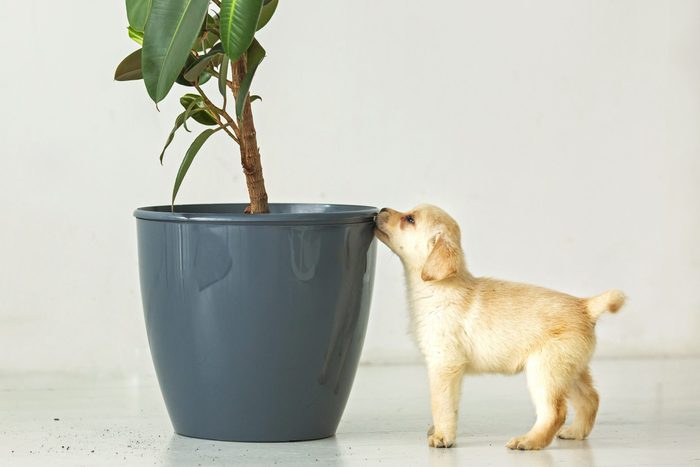 KristinaKibler/Getty Images
KristinaKibler/Getty Images
Plants and your pup
Plants are having a real moment right now, and for good reason. They add beauty to your home, help you feel more in tune with nature, and they even boast health benefits. Unfortunately, some of the most popular and best indoor plants are toxic to dogs, who don't know which ones are safe to munch on or play with and which absolutely aren't. This is important to know, especially if you're buying plants online.
With veterinary help, we're calling out the most common indoor and outdoor poisonous plants for dogs so you can avoid or get rid of them and replace them with some pup-friendly options. Have a cat, too? You'll also want to know the plants that are poisonous to cats.
If you suspect that your pup has munched on a poisonous plant for dogs, consult your vet immediately, or call the Animal Poison Control Center (APCC) at 1-888-426-4435 for guidance.
ⓘ
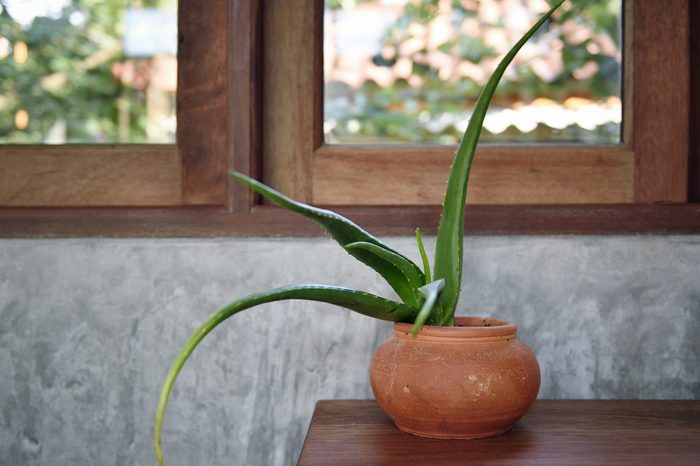 Carlina Teteris/Getty Images
Carlina Teteris/Getty Images
Aloe vera
Toxic components: saponins, anthraquinones
Because it's so easy to maintain and boasts medicinal qualities, aloe vera is a common household plant that people keep both indoors and outdoors. Unfortunately, the gooey gel beloved for its soothing benefits also contains two components that make this plant toxic to dogs when consumed. Typically, signs of ingestion include lethargy and upset stomach, including vomiting and diarrhea. If you bring this plant into your home, we recommend keeping it high up—like on a sink ledge—so it's inaccessible.
RELATED: 50 Secrets Your Pet Won't Tell You
 Brendan Maher/Getty Images
Brendan Maher/Getty Images
Golden pothos (epipremnum aureum)
Toxic component: insoluble calcium oxalates
The winding, ivy-like golden pothos is another poisonous plant for dogs that contains insoluble calcium oxalates—glass-like crystals that can cause severe irritation when eaten. One of the key symptoms is oral itching and irritation, which can sometimes lead to intense burning and pain in and around your pet's mouth. It can also lead to excessive drooling, vomiting, or difficulty swallowing.
RELATED: 11 Foods You Should Never Feed Your Pet
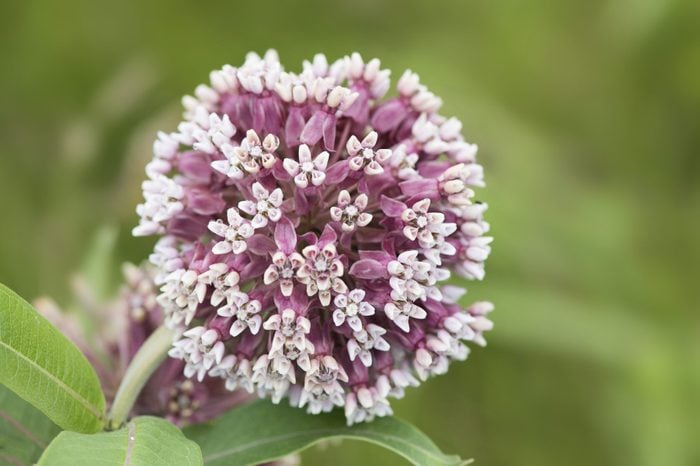 Gail Shotlander/Getty Images
Gail Shotlander/Getty Images
Milkweed (asclepias)
Toxic components: cardiotoxins, neurotoxins
Though it's a wonderful beacon for some of our favorite insects—including monarch butterflies and tussock moths—milkweed is one of those plants toxic to dogs. Some species contain cardiotoxins that affect a pet's heart, while others contain neurotoxins that can affect organ function and mental state. As such, this plant should always be kept outdoors and/or out of reach from your dog.
When consumed, it can cause severe reactions, including depression, weakness, and diarrhea, followed by more intense reactions such as seizures, breathing difficulty, organ failure, and death.
 belchonock/Getty Images
belchonock/Getty Images
Sago palm (cycas revoluta)
Toxic component: cycasin
The sago palm is leafy, beautiful, and very easy to grow, which makes it a popular choice as an indoor plant. However, this plant's toxic to dogs, so you should definitely keep it out of your house. "If consumed by your dog, the sago palm causes severe vomiting, diarrhea, and abdominal pain, as well as stumbling, tremors, seizures, and temperature-regulation issues," warns Christie Long, DVM, head of veterinary medicine at Modern Animal in West Hollywood, California. "Ultimately, it causes liver failure, and death can occur with ingestion of an amount as small as a single seed."
RELATED: These 11 Household Items Are Seriously Hazardous for Your Pets
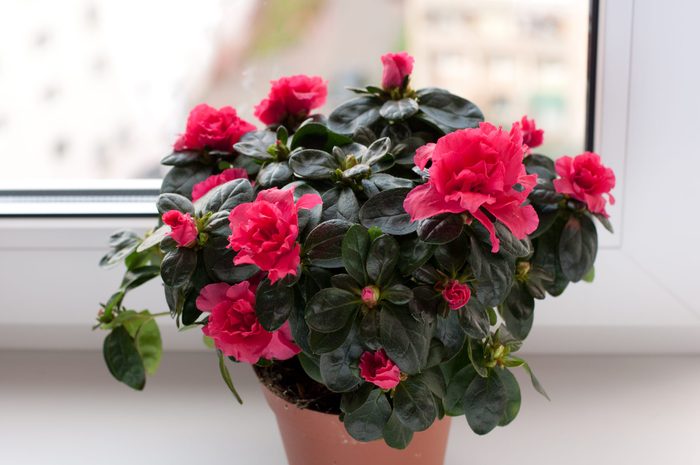 OlgaVolodina/Getty Images
OlgaVolodina/Getty Images
Azaleas (rhododendron)
Toxic component: grayantoxin
Azaleas are colorful and interesting to look at, so it's easy to see why your dog might be attracted to them. Unfortunately, all parts of the azalea plant are poisonous to dogs, including the flower, leaves, seeds, and even honey that's made from the nectar.
"When azaleas are consumed by your dog, it can result in hypersalivation, vomiting, diarrhea, muscle weakness, vision problems, slow heart rate (bradycardia), heart arrhythmia and/or low blood pressure (hypotension), cardiovascular collapse, and possible death," warns Shelly Zacharias, DVM, a veterinarian and the vice president of medical affairs at Gallant.
RELATED: 10 Shockingly Common Dog Dangers in Your Own Backyard
 TommL/Getty Images
TommL/Getty Images
Tulips (tulipa)
Toxic components: tulipalin A and B
Tulips are one of the most popular plants come springtime, but they can cause big problems for curious canines. The flower and stem parts of the plant are toxic, but the bulbs are especially dangerous when consumed. Clinical signs of ingestion include vomiting, diarrhea, hypersalivation, and even depression, notes the APCA.
Garlic and onion (allium species)
Toxic component: n-propyl disulfide
Though it's easy to assume that all vegetables and herbs found in the garden are perfectly OK for your pup, that's not always true. The allium species—which includes garlic and onions—are poisonous plants for dogs.
"Any plant in the allium family, if ingested in large enough quantities, can cause a severe reaction in the bloodstream called hemolysis, in which red blood cells are destroyed in large numbers," says Dr. Long. "The results are severe weakness, rapid breathing, and red-colored urine."
She adds that forced vomiting by a veterinarian is key here, and many dogs will require blood transfusions to replace the blood cells that are damaged in order to survive. Check out these tips for keeping your dog out of your garden.
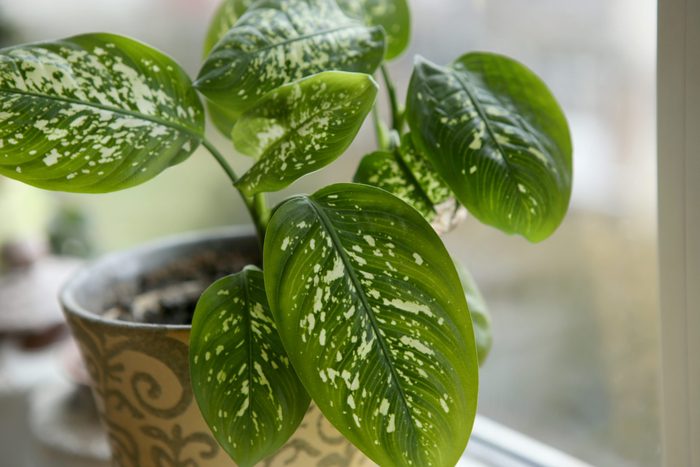 vaitekune/Getty Images
vaitekune/Getty Images
Dumb cane (diffenbachia)
Toxic components: insoluble calcium oxalates, proteolytic enzyme
This stout, leafy tropical indoor low light houseplant may be pretty, but it should be kept out of reach of canines. "This plant contains calcium oxalate crystals, which are similar to microscopic pieces of glass resembling needles," explains Dr. Zacharias. "Chewing or ingesting it causes toxicity. Common symptoms are vomiting, swelling of the mouth and/or throat, severe oral pain, pawing at mouth or eyes, severe skin irritation, agitation, coughing, gagging, and hypersalivation."
Simply coming into contact with the plant can cause symptoms, as well. If your dog's eyes and skin are exposed, flush immediately or give them a bath.
 SEE D JAN/Getty Images
SEE D JAN/Getty Images
Elephant's ear (alocasia)
Toxic component: insoluble calcium oxalates
Alocasia—also known as elephant's ear—is a striking dark green plant commonly found indoors. Like dumb cane, it contains glass-like insoluble oxalate crystals that can cause severe irritation both internally and externally, notes the Pet Poison Hotline. If consumed, an immediate visit to your vet is recommended to monitor and treat symptoms. If your dog's skin or eyes has become irritated by the plant, a bath and/or flushing the skin and eyes with water is recommended.
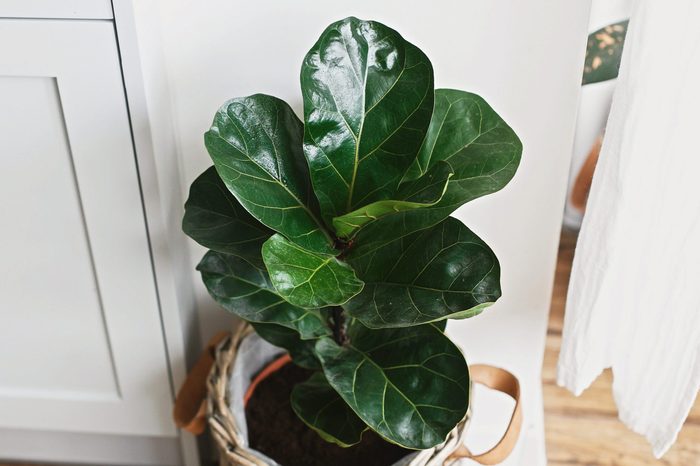 Bogdan Kurylo/Getty Images
Bogdan Kurylo/Getty Images
Citrus plants and peels (rutaceae family)
Toxic components: essential oils and psoralens
"Many [citrus] plants that produce edible fruit—including grapefruit, oranges, and lemons—are toxic if the actual plant portion is ingested. For example, the skin of the fruit, the leaves, or stems can often be dangerous," says Dr. Zacharias.
Whether you grow these plants in your yard or bring them into your home from the grocery store, keep your dog away from them. Reactions may not be as severe as with other plants toxic to dogs, but if you suspect consumption, call your vet for guidance. They may request that you bring your dog in, especially if severe symptoms occur.
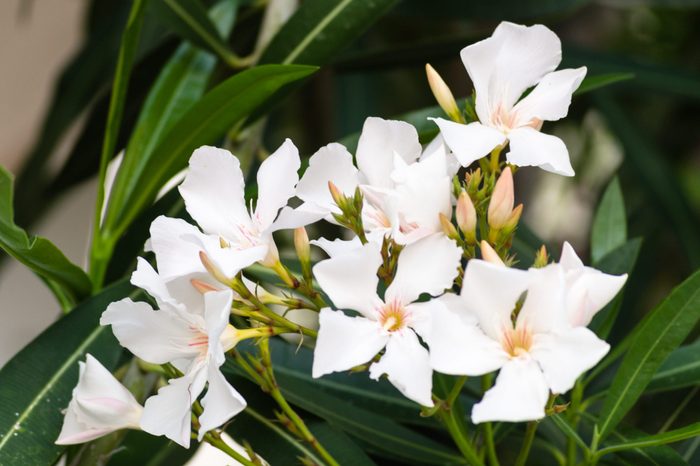 CovaCaoCao/Getty Images
CovaCaoCao/Getty Images
Oleander (nerium oleander)
Toxic component: cardiac glycosides
Oleander, known for its white or pink flowers and height that provides privacy between yards, is another poisonous plant for dogs.
"Oleander ingestion causes extreme salivation, abdominal pain, vomiting, diarrhea, and lethargy. In severe cases, it causes liver failure and death, and it can ultimately interfere with the heart's ability to beat properly," explains Dr. Long. "Once it is known that the dog ingested these poisonous leaves, rapid transfer to a veterinary hospital where vomiting can be induced is key. Supportive therapy with drugs designed to control gastrointestinal signs, as well as reverse liver and heart issues, is key to survival."
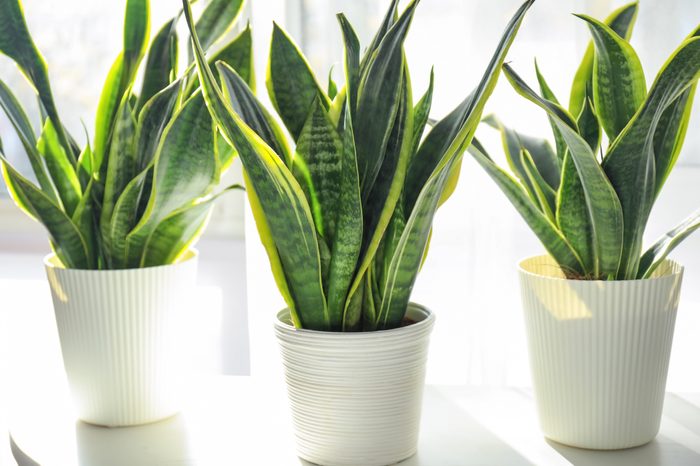 serezniy/Getty Images
serezniy/Getty Images
Snake plants (sansevieria trifasciata)
Toxic component: saponins
Because of its striking appearance and the fact that it's a houseplant that's very hard to kill, snake plants are found in houses all across the world. Unfortunately, they are also poisonous plants for dogs and can cause nausea, vomiting, and diarrhea if consumed, says the ASPCA. It's important to contact your veterinarian right away if you think your dog has ingested any portion of a snake plant. Depending on the severity, you may need to simply monitor and treat your dog's symptoms, or you may need to take your dog in for more aggressive treatment.
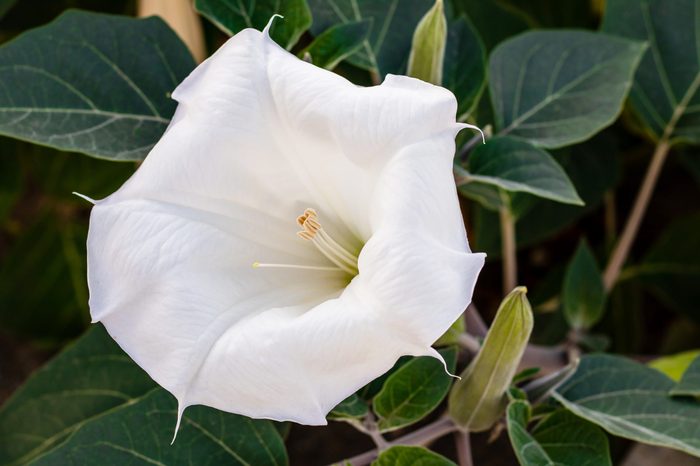 Tatyana Azarova/Getty Images
Tatyana Azarova/Getty Images
Morning glory (ipomoea)
Toxic component: indole alkaloids
This beautiful vine plant that flowers in the morning may be irresistible to humans—and also to dogs—who might be tempted to chomp on them when they open. "The seeds are most toxic, and canine consumption can cause vomiting, nausea, pupil dilation (mydriasis), hallucinations, incoordination, diarrhea, anemia, confusion, and liver failure," notes Dr. Zacharias.
Go to your veterinarian or an emergency veterinary center right away if you suspect consumption. Treatment consists of activated charcoal, IV-fluid administration, and ongoing symptomatic support.
RELATED: 10 Signs Your "Healthy" Pet Is Showing Dog Illness Symptoms
 novoselov/Getty Images
novoselov/Getty Images
Marijuana (cannabis sativa)
Toxic component: delta-9-THC (tetrahydrocannabinol)
With the increase in legalized social and medicinal marijuana, it's become more commonplace to have this plant in homes and yards. While OK for humans, it can have adverse reactions when consumed by your dog.
"In small quantities, marijuana causes lethargy, trembling, urinary incontinence, and anxiety. In large quantities—which are often ingested with chocolate in the form of pot edibles—dogs can experience seizures, coma, and death," warns Dr. Long. She adds that if chocolate is ingested along with marijuana, the toxicosis is quite serious, and affected dogs need immediate treatment.
RELATED: 13 Things to Know Before Giving CBD to Your Pet
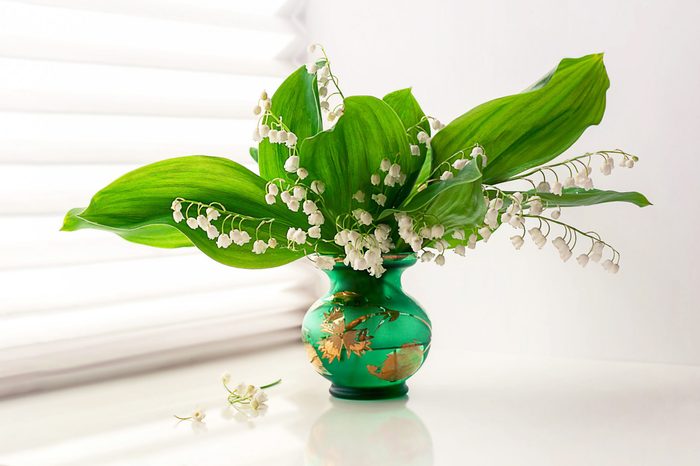 LarisaL/Getty Images
LarisaL/Getty Images
Lily of the valley (convallaria majalis)
Toxic component: cardenolides
Lily of the valley is a beloved indoor and outdoor flower, but pet parents should not introduce it to their home or garden since this plant's toxic to dogs. Known for its delicate white flowers, it is a highly poisonous plant for dogs and can result in vomiting, irregular heartbeat, reduced blood pressure, confusion, and disorientation. In severe cases, it can even cause seizures or lead to a coma. Consult your veterinarian immediately for further instruction if you suspect your dog has consumed this plant.
 Iva Vagnerova/Getty Images
Iva Vagnerova/Getty Images
Yew (taxus)
Toxic component: taxine
Yew is an evergreen shrub typically found outdoors. "If ingested, it can cause sudden death, trembling, muscle weakness, trouble breathing, collapse, and heart arrhythmia," says Dr. Zacharias. "If you suspect your canine has eaten any part of this plant, immediately go to your veterinarian or emergency veterinary center. Treatment will consist of gastrointestinal decontamination—activated charcoal or possibly gastric lavage or an enema—as well as IV-fluid therapy and supportive therapy for any respiratory or cardiovascular function."
RELATED: 28 Safety Tips to Keep Your Dog in Top Shape This Summer
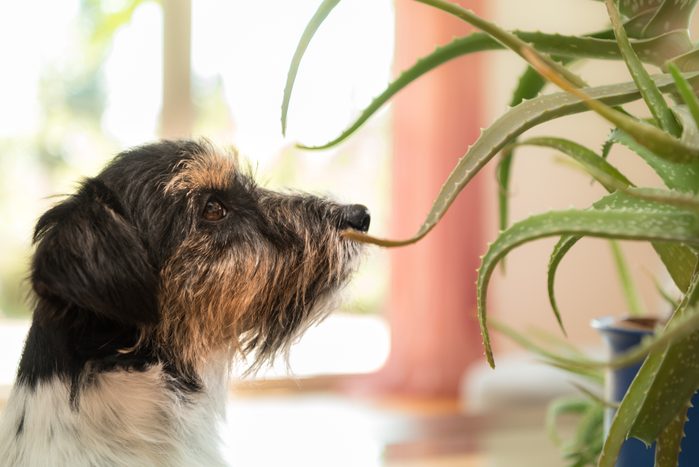 K_Thalhofer/Getty Images
K_Thalhofer/Getty Images
General care
If your dog has ingested any of the above plants toxic to dogs, we recommend calling your veterinarian or a pet poison hotline, like the APSCA, for guidance. If your pet is already showing any physical symptoms, then head to the veterinary clinic immediately. Not all cases are life-threatening, but it is always in our pet's best interest to provide them with care and comfort. As an aside, our veterinary experts say it's best not to induce vomiting yourself if your dog ingests a toxic substance. In some cases, the substance has already been digested and absorbed into the body.
Sources:
- Animal Poison Control Center (APCC)
- ASPCA: Poisonous Plants
- Christie Long, DVM, head of veterinary medicine at Modern Animal in West Hollywood, California
- Shelly Zacharias, DVM, a veterinarian and the vice president of medical affairs at Gallant.
Originally Published: May 10, 2021
Sign up for articles sent right to your inbox
Enjoy the best stories, advice & jokes delivered right to your inbox!

Subscribe & SAVE Save Up To 84%!
How Much Rhubarb Leaf Is Poisonous to Dogs
Source: https://www.rd.com/list/poisonous-plants-for-dogs/